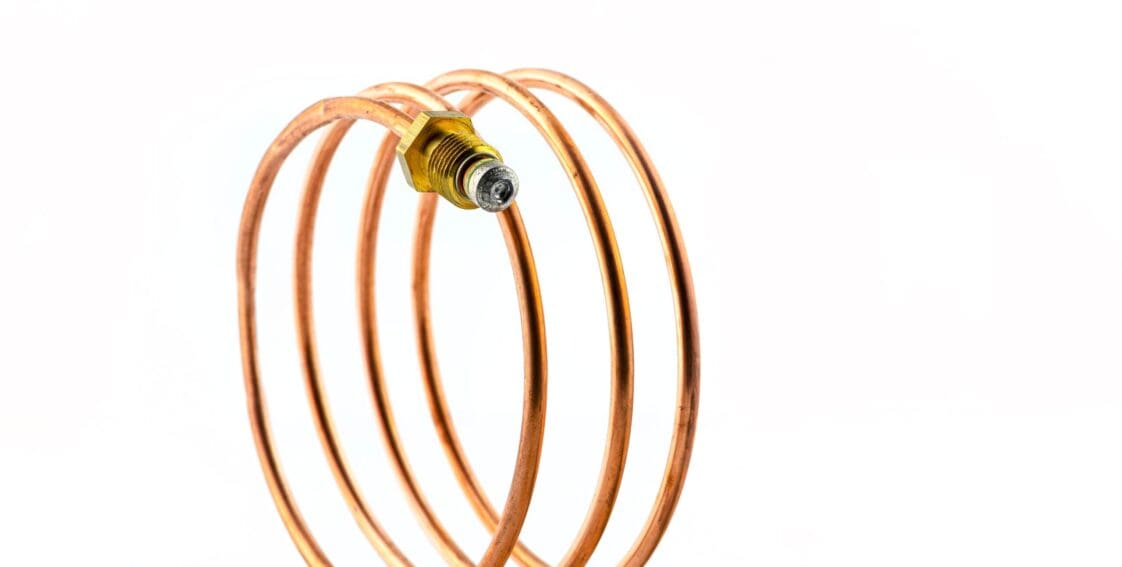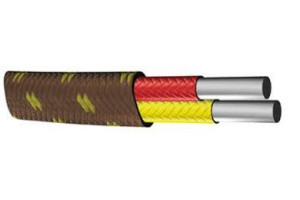
J Type Versus K Type Thermocouples
Thermocouple Benefits by Type
Poor temperature control of equipment or processes not only affects product quality but also has a detrimental effect on workplace safety and production.
One way to ensure good control is to use thermocouples, which are heat-sensing devices that operate via the Seebeck effect. This phenomenon occurs when certain materials produce a voltage in response to an applied temperature gradient.
Many types of thermocouples can be implemented in industrial heating processes. The two most common types are J and K. In this article, we’ll break down the key differences between the two regarding their design, common uses, accuracy, and general specifications.
J Type

J Type thermocouples have a simple design featuring two metal wires, iron, and Constantan (a copper-nickel alloy), joined together at one end. When this junction is heated or cooled, a small voltage is generated that directly correlates to the rise and fall of the surface or area temperature. They also feature one white wire and one red wire.
Temperature Range
J Type thermocouples have a wide temperature range but are not used for tight temperature tolerances. They can detect and react to temperatures between 32 and 1,382 degrees F (0 to 750 degrees Celsius). This puts the J thermocouple midway in the industrial temperature range and makes it an economical solution for generalized temperature monitoring.
Accuracy
Even with the wide temperature detection range, a J Type thermocouple is extremely accurate when used in the appropriate applications.
A standard J Type sensor manufactured with standard-grade thermocouple wire will be accurate within +/- 2.2 degrees Celsius (+/- 36 degrees Fahrenheit) or +/- .75%.
For greater accuracy and responsiveness, a higher-grade wire can be used to design sensors within Special Limits of Error of +/- 1.1 degrees Celsius (+/- 34 degrees Fahrenheit) or 0.4%.
Benefits
- The less expensive option when compared to Type K
- Wider temperature range
- Faster response time (provides 1 mV output per 18 degrees Celsius)
- Versatile/can be used in a wide range of industrial applications
- Compact yet durable under thermal shock and vibration
Applications
A Type J thermocouple is used in general industrial equipment and processes, such as monitoring temperatures of non-reactive materials like sand, concrete, plastics, and resins. Other general applications include:
- Industrial furnaces, kilns, ovens, and boilers
- Plastic injection molding, extrusion, and thermoforming
- Inert material processing and reducing atmospheres
- Vacuum temperature monitoring
K Type

The design of a K Type thermocouple contributes to its low cost and widespread industrial usage. Type K is constructed with non-iron, non-corrosive materials, namely Chromel (a chrome and nickel alloy) and Alumen (a silicon-based composite). It features two dissimilar metal wires (representing positive and negative connections) that are joined and welded together, along with the sensor’s sheath, to create a grounded thermocouple. It also features one red wire and one yellow wire.
An ungrounded K Type thermocouple is designed with the negative and positive wires insulated from the sheath material. This type of ungrounded junction makes the thermocouple even more suitable for corrosive environments because it electronically isolates the sensor and shields the thermocouple wires from the sheath.
A K Type sensor with an exposed or bare wire with no protective sheath surrounding the welded junction has the best response time but is more prone to degradation.
Temperature Range
Type K has a greater temperature range than J Type. It can monitor temperatures from –454 to 2,300 degrees Fahrenheit (–270 to 1,260 degrees Celsius). The improved reaction time and wider temperature range are why the K Type is the most commonly used thermocouple in industrial settings.
Accuracy
The accuracy of a standard K Type thermocouple is a maximum of +/- 2.5 degrees Celsius (36.5 degrees Fahrenheit) or +/- 0.75%.
A Type K thermocouple constructed of higher-grade thermocouple wire will have a Special Limit of Error of +/- 1.1 degrees Celsius (+/- 34 degrees Fahrenheit) or 0.4%.
Due to the types of alloys used, the K Type thermocouple is less stable than the J Type. Its readings can drift in proportion to the environment’s temperature (as the temperature increases, the drift increases).
Benefits
- Suitable for high temperatures and corrosive or harsh environments
- Wider temperature range
- Cost-effective
- Compact
- Good reaction time
- Resistant to oxidation in atmospheres below 1,000 degrees Celsius (1,832 degrees Fahrenheit).
Applications
- Steel and iron processing
- Chemical processing plants
- Petroleum refineries
- Food processing
- Industrial manufacturing
- Nuclear applications
- Scientific and medical industries
How to Choose the Right One
The first consideration should be the thermocouple’s application. What type of temperature range and accuracy does your application require? A thermocouple’s accuracy and designated temperature range will vary based on the alloys it’s made from, along with its wiring, sheath material, sheath diameter, and the state of the medium being measured (liquid, solid, or gas).
It’s also important to match the process operating parameter with the characteristics of the thermocouple, such as the temperature range, the sensor’s resistance to the chemical and physical environment, and the response time (or degree of accuracy and sensitivity) required to trigger a process reaction.
Purchase a Thermocouple Today
Based in Michigan, Hi-Watt is a leading regional supplier of industrial heating products, including thermocouples, from leading brands like Watlow®, Tempco, and Pyromation®.
Please contact our product specialists today if you need help selecting the right thermocouple for your application.
